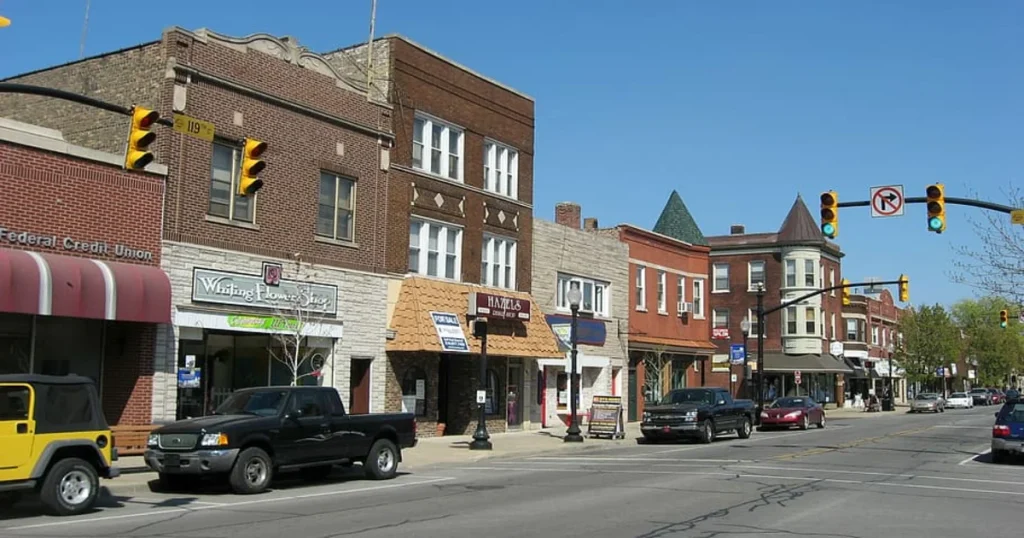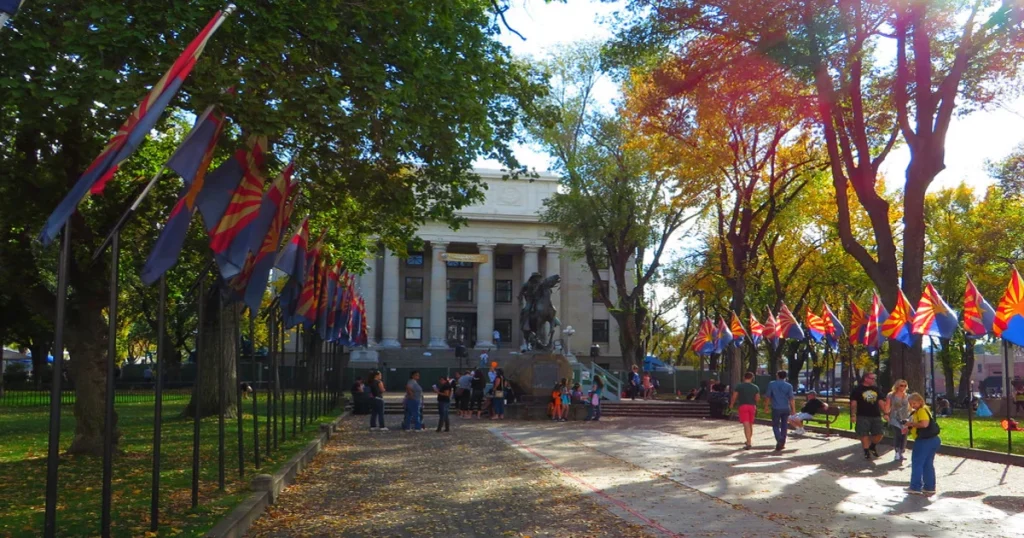Prescott’s downtown, with its historical significance, has always been the beating heart of the city. Yet, as times change, there’s a prevailing question: How have preservation efforts impacted downtown Prescott businesses?

From economic resurgence to challenges faced by entrepreneurs, this article delves deep into the transformation. Let’s uncover this journey.
Historical Background
The term “historical background” delves into the origins, evolution, and foundational events of a particular subject or context. This background serves as a tapestry of events, decisions, and influences that have shaped the present state of that subject.
Whether it’s a city, an institution, a culture, or even an idea, understanding its historical background offers insights into its current characteristics and potential future trajectories.
This foundational knowledge often provides context, depth, and nuance to contemporary discussions, ensuring that decisions and interpretations are rooted in a comprehensive understanding of the past.
Downtown Prescott in the 20th Century
In the early 1900s, downtown Prescott buzzed with activity. The streets were lined with businesses that reflected the economic prominence and cultural significance of the area. From bustling markets to entertainment centers, Prescott was alive and thriving.
Historic Prescott sheds light on the various landmarks and establishments that once were the pride of the town.
However, by the late 20th century, global changes started impacting local scenes. Urbanization led many to migrate, and businesses, once flourishing, faced a gradual decline.
The Onset of Decay
The latter half of the 20th century marked a period where urban migration started pulling people towards larger cities. Local businesses began feeling the pinch as footfall decreased.
With the decline in business activities, many historic buildings started showing signs of neglect. PreservationDirectory discusses the general trend of decay in historic downtowns during this period.
This scenario sparked a realization. There was an evident need for preservation and urban renewal to retain the town’s original charm and support its businesses.
Preservation Initiatives
Preservation initiatives are concerted efforts aimed at safeguarding and maintaining historical, cultural, or natural assets. These initiatives often span from restoring old architectural wonders and monuments to conserving natural habitats and biodiversity.

In the context of urban landscapes, preservation initiatives primarily focus on maintaining the historical charm and significance of downtown areas. Such endeavors, often driven by local authorities, community groups, or NGOs, play a crucial role in balancing the rapid pace of modern development with the imperative need to retain a city’s heritage and identity.
Government Policies and Preservation Acts
To counter the decline, local authorities began implementing policies favoring preservation. Zoning laws were modified, promoting the restoration of historic buildings. These laws also included financial incentives, encouraging business owners to undertake renovations.
The National Trust for Historic Preservation provides insights into how such policies have helped towns across the U.S.
Community engagement played a pivotal role. Grassroots efforts began to gather momentum as local campaigns highlighted the importance of preserving Prescott’s heritage.
Community-Led Initiatives
Businesses and preservationists started collaborating, aiming to rejuvenate downtown Prescott while keeping its historical essence intact. These partnerships led to the organization of community events that celebrated the town’s history.
PrescottChamber chronicles the various community-led initiatives that have shaped the downtown area over the years.
Influence of Non-profits and Foundations
Several non-profit organizations recognized the potential of Prescott’s restoration. They started offering grants and funds to support the preservation endeavors.
Moreover, they introduced workshops and educational programs, guiding business owners in integrating historic values with contemporary needs.
Tangible Impacts on Businesses
The term “tangible impacts” refers to concrete, measurable outcomes or changes that can be clearly seen or quantified. In the context of businesses, these impacts can range from increased sales and foot traffic to improved brand reputation and elevated property values.
When assessing the influence of initiatives like historical preservation on downtown areas, one might notice a boost in tourism, a surge in demand for local goods, or an uptick in commercial rental rates.
Such definitive outcomes not only validate the efforts invested but also underscore the real-world significance of strategic decisions and interventions.
Economic Revival
With preservation came tourists. Downtown Prescott began to witness an increase in foot traffic. Businesses, especially those that embraced the town’s history, started seeing a boost in their sales. The rising demand also escalated property values and rental rates.
According to Forbes, heritage-driven tourism has the potential to revamp local economies, a trend evident in Prescott.
Businesses soon recognized the potential of banking on “heritage” branding. Many integrated Prescott’s history into their business models, offering products and services that evoke a sense of nostalgia. For instance, cafes with a vintage theme or stores selling antiques started gaining traction.
New Business Opportunities
The preservation efforts opened doors to several niche markets:
- Historical walking tours of the city.
- Events celebrating Prescott’s rich history.
- Artisanal shops selling products reminiscent of Prescott’s golden era.
Challenges of Merging Preservation with Business
Blending the realms of historical preservation with modern business can be a tightrope walk. On one side, there’s the noble endeavor of maintaining a location’s historical integrity; on the other, the practical necessities of contemporary commerce.
This merger often brings forth challenges like adhering to strict restoration guidelines, financial constraints, and operational restrictions in historic buildings.
While the allure of a vintage aesthetic can draw customers, ensuring that these spaces meet today’s business requirements without compromising their historical essence is a delicate balance to achieve.
Financial Strains
While the essence of preservation is noble, it does come with its set of challenges. Adhering to strict preservation guidelines meant businesses had to sometimes bear additional costs. Delays in construction due to these norms also impacted the businesses financially.
Space constraints due to preservation norms meant some businesses couldn’t expand as they might have wished. Also, altering the interiors of historic buildings to fit modern business needs proved to be a challenge for many.
Walking the tightrope between maintaining historical integrity and catering to contemporary needs was no easy feat. However, innovative solutions, like using technology subtly or redefining spaces, started emerging.
Success Stories
Success stories serve as powerful testaments to achievements, determination, and innovation. They narrate tales of challenges overcome, objectives met, and milestones achieved, often inspiring others to tread similar paths. In business, sharing success stories can foster trust with customers, showing them tangible results and instilling confidence.

When related to historical downtowns, success stories often chronicle the transformation of neglected areas into bustling hubs of culture and commerce, emphasizing the power of community engagement, strategic planning, and preservation efforts.
Prescott’s Vintage Cafés and Bistros
Many cafes and bistros in downtown Prescott successfully combined history with modern-day café culture. These establishments offer not just food but an experience – a glimpse into the past.
Another sector that benefited tremendously from the preserved environment is the antique market. Shops selling vintage items found a resurgence in popularity, making them a staple in downtown Prescott.
Prescott’s downtown became the backdrop for numerous events and festivals. Businesses played a pivotal role in promoting these events, making them a significant draw for both locals and tourists.
Comparative Analysis
A comparative analysis involves examining two or more subjects to discern their similarities and differences. This method is often employed in academic, market research, and business environments to evaluate and differentiate products, theories, or data sets.
The goal is to draw valuable insights, make informed decisions, or highlight best practices. In the context of historical downtowns, a comparative analysis could shed light on how different cities approach preservation, shedding light on successful strategies and areas for improvement.
Prescott vs. Other Historic Downtowns
Prescott has done an impressive job comparing preservation strategies. While many cities focus solely on maintaining architectural integrity, Prescott has successfully intertwined its history with business needs.
A detailed analysis by UrbanLand highlights the unique approach of Prescott in juxtaposition with other historic downtowns.
FAQ: How preservation efforts have impacted downtown Prescott businesses
What prompted the initial push for preservation in downtown Prescott?
The decline in business activities and visible neglect of historic buildings were primary triggers.
How have businesses coped with the additional costs of preservation?
Many leveraged financial incentives are provided by the government. Collaboration and community support also played a crucial role.
Are there businesses that have opposed preservation efforts? Why?
Yes, some businesses found the operational restrictions and costs challenging. However, over time, most recognized the long-term benefits.
How does Prescott’s approach to preservation compare to international models?
Prescott has done a commendable job, especially when considering its integration of business needs with historic values.
What can other towns learn from Prescott’s downtown revitalization?
The importance of community involvement, the potential of heritage branding, and the necessity of flexible yet robust policies.
Conclusion:
Prescott’s journey, from its 20th-century vibrancy to facing the challenges of urban migration and decay, and its eventual revival, is inspiring.
The town stands as a testament to what community effort, sound policies, and a deep sense of history can achieve.



Leave a Comment
You must be logged in to post a comment.